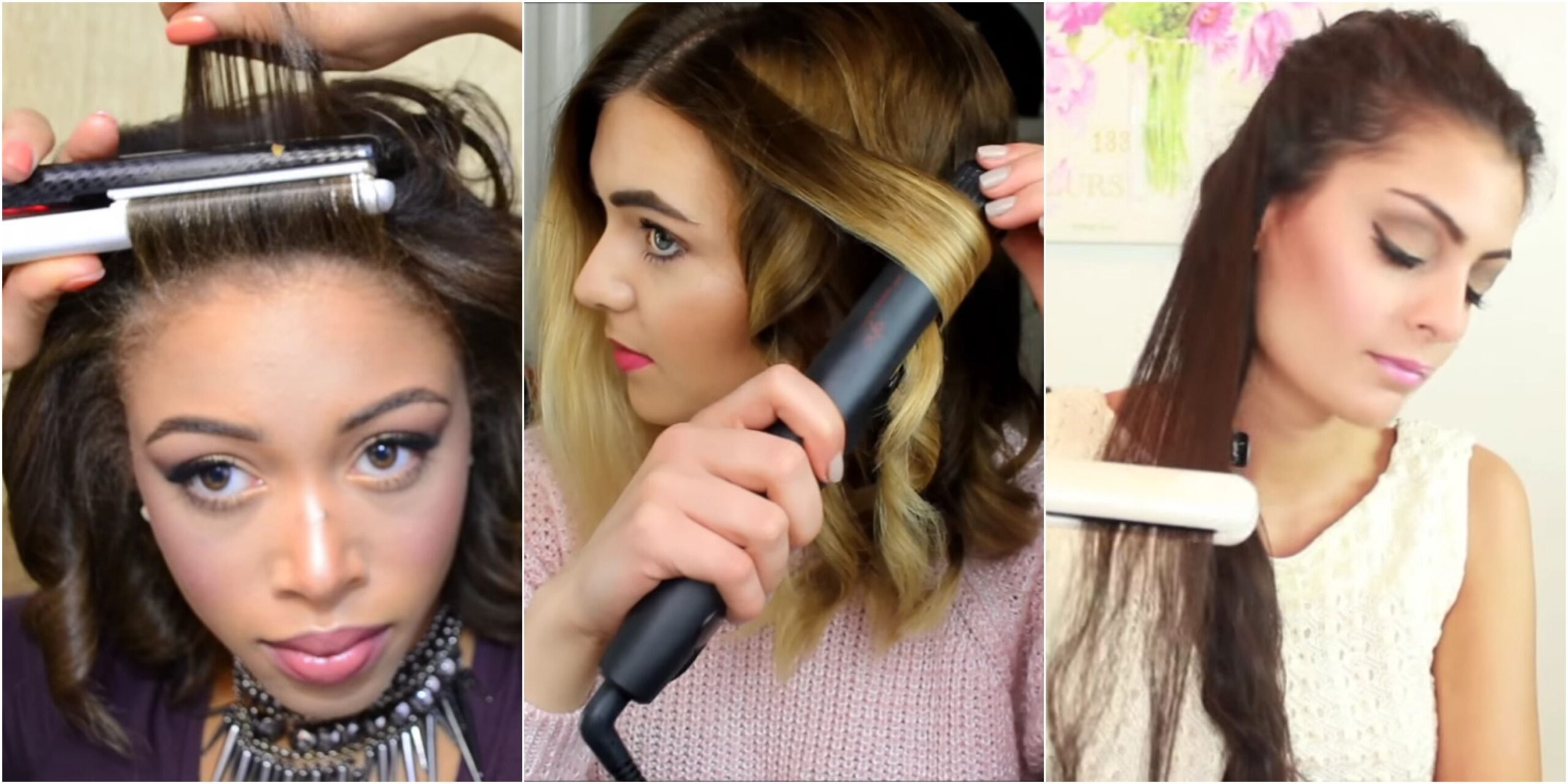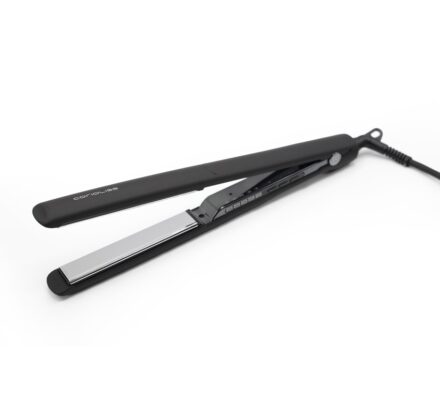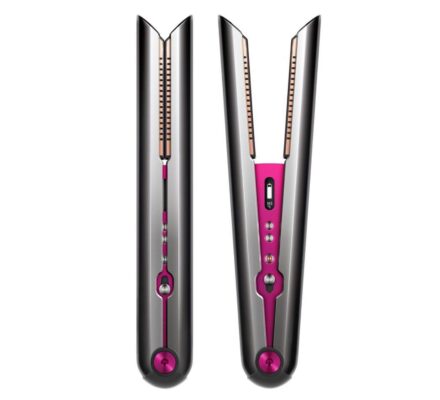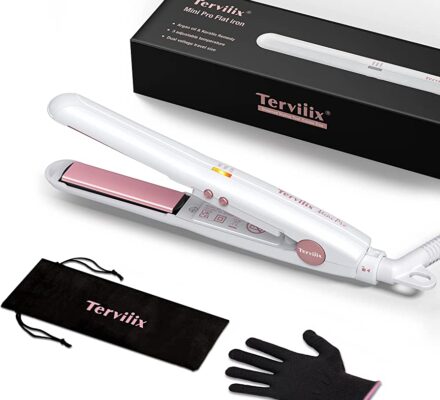“How often to use a hair straightener? It’s a common question that many people ask when it comes to styling their hair. The key to finding the right frequency lies in understanding your hair type and its needs. Take a moment to assess your hair’s condition and texture. If you have fine or damaged hair, it’s best to limit your use of a straightener to a few times a week, allowing your hair time to recover and minimize any potential damage. On the other hand, if you have naturally thick or coarse hair, you might benefit from using a hair straightener more frequently to achieve the desired results. Remember, it’s important to protect your hair by using heat protectant sprays and serums before applying any heat.”
“Keep in mind that excessive or improper use of a hair straightener can lead to damage, such as dryness, split ends, or breakage. If you notice any signs of damage, it’s crucial to give your hair a break and focus on nurturing it back to health. Regular trims, deep conditioning treatments, and a balanced hair care routine can help restore its vitality. Always listen to your hair’s needs and adjust the frequency of using a hair straightener accordingly. With proper care and consideration, you can enjoy beautifully styled hair without compromising its health.”

Factors to Consider
Hair Type
When determining how often to use a hair straightener, it’s important to consider your hair type. Some hair types, such as naturally straight or fine hair, may require less frequent use of a straightener compared to those with curly or thick hair. Straightening curly or thick hair often requires more heat and time, making it more prone to damage. On the other hand, fine or straight hair may not need as much heat or styling to achieve desired results.
Hair Texture
Hair texture is another factor to take into account when deciding how often to use a hair straightener. If you have coarse or rough-textured hair, you may need to use a straightener more frequently to achieve a sleek and smooth look. However, if you have naturally smooth or silky hair, you may not need to use a straightener as often.
Health of Hair
The overall health of your hair is crucial in determining how often you should use a straightener. If your hair is already damaged, fragile, or prone to breakage, excessive use of a straightener can further worsen the condition. In such cases, it is recommended to limit the use of heat styling tools. On the other hand, if your hair is healthy and well-maintained, you may be able to use a straightener more frequently without causing significant damage.
Environmental Factors
Environmental factors, such as humidity and air quality, can also impact how often you should use a hair straightener. In humid climates, hair is more prone to frizz and may require frequent touch-ups with a straightener. Similarly, exposure to pollutants or harsh chemicals in the air can make your hair more susceptible to damage, and thus, the use of a straightener should be minimized.
Daily Use Frequency
Less Frequent Use for Healthier Hair
To maintain the health of your hair, it is generally recommended to limit daily use of a hair straightener. Excessive heat exposure can strip your hair of its natural oils, leading to dryness, breakage, and split ends. To give your hair a break, try to minimize straightening to a few times a week, allowing your hair to recover and retain its natural moisture.
Limit Heat Exposure
Using a hair straightener at high temperatures can cause significant damage to your hair. You should aim to use the lowest heat setting necessary to achieve your desired style. This will help reduce the risk of overheating and minimize the potential for hair damage.
Use Heat Protectant Products
Using a heat protectant product before using a hair straightener can add an extra layer of protection to your hair. These products form a barrier between your hair and the heat, minimizing damage and preventing moisture loss. Apply the heat protectant evenly throughout your hair before styling to ensure maximum effectiveness.
Avoid Overheating
It is important to avoid overheating your hair by going over the same sections multiple times with a straightener. This can cause excessive heat damage and increase the likelihood of hair breakage. Instead, use a slow and steady motion when straightening your hair, ensuring even heat distribution and minimizing the risk of overheating.
Consider Alternative Hairstyling Methods
If you find yourself using a hair straightener daily, it may be worth exploring alternative hairstyling methods to give your hair a break. For example, consider embracing your natural waves or curls, or try out different hairstyles using hair accessories or braids. By giving your hair a break from heat styling, you can promote its overall health and minimize damage.
Occasional Use Frequency
Special Occasions
For special occasions, such as weddings or parties, it is common to use a hair straightener to achieve a polished and sophisticated look. However, since these occasions are not frequent, the occasional use of a straightener should not cause significant damage to your hair. Remember to use heat protectant products and limit heat exposure to minimize any potential damage.
Party or Event
Attending a party or event where you want to switch up your look? Using a hair straightener occasionally for these purposes is generally safe as long as you take proper precautions. Avoid using excessive heat, and make sure to use a heat protectant product to shield your hair from damage.
Professional Hair Styling
If you work in a professional setting or attend formal events regularly, you may opt to use a hair straightener more often. In such cases, it is crucial to prioritize the health and well-being of your hair. Take extra care in choosing the right heat setting and using heat protectant products to minimize damage.
Avoiding Excessive Damage
While occasional use of a hair straightener is acceptable, it is important to avoid excessive use that can potentially cause irreversible damage. Always consider the condition of your hair and monitor any signs of overuse or damage, such as split ends, dryness, or lack of shine. Adjust your styling frequency accordingly to maintain the health of your hair.
Weekly Use Frequency
Maintaining Straight Hairstyle
If you prefer to wear your hair straight on a regular basis, using a hair straightener once or twice a week can help you achieve a consistent look. However, it is essential to take the necessary precautions to protect your hair from heat damage. Always use a heat protectant, keep the straightener at a moderate temperature, and avoid excessive heat exposure.
Consistency in Look
If you strive for a consistent hairstyle throughout the week, using a hair straightener once or twice a week can help you achieve that sleek and polished appearance. Remember to give your hair regular breaks from heat styling to promote overall hair health.
Incorporating Rest Days
Allowing your hair to rest from heat styling is essential for maintaining its health and strength. Consider incorporating rest days into your weekly routine where you embrace your natural hair texture or try alternative styling methods that don’t require heat. This will help prevent overuse of a hair straightener and minimize the risk of damage.
Avoiding Daily Heat Exposure
Using a hair straightener every day can result in excessive heat exposure, leading to dryness, breakage, and dullness. By limiting straightening to a weekly basis, you give your hair ample time to recover and retain its natural moisture. Additionally, incorporating other styling methods on non-straightening days can provide versatility and reduce reliance on heat styling.
Monthly Use Frequency
Decreased Heat Exposure
Using a hair straightener only once a month can significantly minimize heat damage to your hair. This frequency allows your hair to recover and reduces the risk of long-term damage. Embracing your natural hair texture for the majority of the month and using alternative styling methods can help you give your hair a break from heat styling.
Reducing Breakage
By reducing the use of a hair straightener to once a month, you can help minimize the risk of hair breakage. Excessive heat can weaken the hair shaft, leading to breakage and split ends. Decreasing the frequency of straightening allows your hair to maintain its structural integrity and reduces the likelihood of breakage.
Deep Conditioning Treatment
Using a hair straightener less frequently provides an opportunity to incorporate deep conditioning treatments into your monthly hair care routine. Deep conditioning helps replenish moisture, repair damage, and improve the overall health and appearance of your hair. Take advantage of this extra care to support your hair’s strength and vitality.
Restoring Natural Curl Pattern
If you have naturally curly or wavy hair and want to restore your hair’s natural curl pattern, using a hair straightener once a month can help. This infrequent use allows your curls to bounce back and recover from the heat damage of straightening. Embrace your natural texture for the majority of the month and use a straightener sparingly to maintain the health of your curls.
Choosing the Right Hair Straightener
Quality and Durability
When selecting a hair straightener, prioritize quality and durability. Look for reputable brands known for producing reliable and long-lasting products. Investing in a high-quality straightener will not only ensure better styling results but also minimize the risk of damage to your hair.
Plate Material
The material of the straightener’s plates is vital in determining its performance and impact on your hair. Ceramic plates are a popular choice as they distribute heat evenly and minimize heat damage. Titanium plates offer efficient heat transfer, making them suitable for thicker or coarser hair. Consider your hair type and needs when selecting a straightener with the appropriate plate material.
Heat Settings
Hair straighteners with adjustable heat settings provide flexibility for different hair types and desired styling results. Lower heat settings are typically recommended for fine or damaged hair, while higher heat settings may be necessary for coarse or thicker hair. Having control over the temperature allows you to minimize heat damage and achieve optimal results.
Size and Weight
Consider the size and weight of the hair straightener when making your purchase. A lightweight and compact straightener can be more comfortable to use and travel-friendly. Additionally, smaller plates may be more suitable for shorter hair or precision styling, while larger plates are preferable for longer hair or faster straightening.
Additional Features
Some hair straighteners offer additional features, such as automatic shut-off timers or temperature lock functions. These features can enhance safety and convenience during use. Consider your preferences and needs when choosing a straightener with additional features that align with your styling routine.
Signs of Overuse or Damage
Split Ends
One of the most common signs of overusing a hair straightener is the presence of split ends. Excessive heat weakens the hair shaft, causing it to split. If you notice an increased number of split ends, it may be an indication that you are using your straightener too often or at too high a temperature.
Dry and Brittle Hair
Repeated exposure to heat can strip your hair of its natural moisture, leading to dryness and brittleness. If your hair feels excessively dry or lacks its usual softness and flexibility, it may be a sign that you are overusing your straightener.
Unusual Hair Loss
While some hair shedding is normal, excessive hair loss or noticeable thinning can be a result of overusing a hair straightener. The excessive heat can weaken the hair follicles and cause them to become damaged, leading to hair loss or thinning over time.
Lack of Shine
Healthy hair is characterized by a natural shine and luster. If your hair appears dull, lackluster, or has lost its shine, it could be a sign that your hair is being damaged by overuse of a straightener. Excessive heat exposure can strip the hair of its natural oils, resulting in a lack of shine.
Uneven Texture
Overuse of a hair straightener can lead to an uneven texture, with some sections of your hair appearing smooth and straight while others remain frizzy or wavy. This uneven texture is a common sign of heat damage and indicates that you may need to adjust your straightening frequency or technique.
Alternatives to Hair Straighteners
Hair Rollers or Curling Irons
If you want to switch up your hairstyle without using a hair straightener, hair rollers or curling irons can be great alternatives. Hair rollers can create voluminous waves or curls, while curling irons allow for more precise styling. These tools can help you achieve a different look without subjecting your hair to excessive heat straightening.
Blowouts
Blowouts are a popular alternative to using a hair straightener, especially for those who desire a sleek and smooth look. With the help of a blow dryer and a round brush, you can achieve a straightened effect without direct heat contact. Using a heat protectant product is still recommended when blow drying to minimize damage.
Braiding or Twisting
Braiding or twisting your hair while it’s damp is another heat-free alternative to straightening. This method can create waves or curls, depending on the style and size of the braids or twists. Allow your hair to air dry or use a diffuser attachment on a blow dryer to speed up the process.
Chemical Straightening Treatments
For those seeking a more long-lasting straightening solution, chemical straightening treatments, such as a keratin treatment or a Japanese straightening perm, can be considered. These treatments chemically alter the structure of the hair, resulting in straightened hair for an extended period of time. However, it is important to consult with a professional stylist before undergoing any chemical treatments to assess the suitability for your hair and to ensure proper application and aftercare.
Proper Hair Care Routine
Regular Trimming
Regularly trimming your hair helps eliminate split ends and promotes overall hair health. This is especially important if you frequently use a hair straightener, as it can contribute to split ends and frayed hair strands. Aim to trim your hair every 6-8 weeks to maintain its health and prevent further damage.
Deep Conditioning
Incorporating deep conditioning treatments into your hair care routine helps nourish and hydrate your hair, replenishing moisture lost from heat styling. Opt for deep conditioning masks or treatments that are specifically formulated to repair and strengthen damaged hair. Apply the treatment once a week or as recommended by the product instructions.
Gentle Hair Cleansing
Using gentle and sulfate-free hair cleansers can help maintain the health of your hair. Harsh shampoos can strip the scalp and hair of natural oils, making them more susceptible to damage. Look for gentle cleansers that effectively clean your hair without causing dryness or irritation.
Protection from Heat and UV
In addition to minimizing the use of a hair straightener, it is crucial to protect your hair from heat and UV damage. Before going out in the sun, apply a leave-in conditioner or UV protectant spray to shield your hair from harmful rays. When using a hair straightener or any heat styling tools, always use a heat protectant product to minimize damage.
Using Quality Hair Products
Using high-quality hair products, such as shampoos, conditioners, and styling products, can significantly benefit the health of your hair. Look for products that are suitable for your hair type and address any specific concerns or needs. Using quality hair products ensures that your hair receives the necessary nutrients and protection, helping to maintain its overall health.
Consulting a Professional
Professional Hair Assessment
If you are unsure about how often to use a hair straightener or have concerns about the health of your hair, it is advisable to consult a professional hairstylist. A hairstylist can assess your hair type, texture, and condition, and provide personalized recommendations tailored to your specific needs and goals.
Styling Recommendations
A professional hairstylist can offer expert advice on the frequency and technique of using a hair straightener based on your desired style and the condition of your hair. They can recommend suitable products, share styling tips, and suggest alternative methods to achieve your desired look without causing excessive damage.
Customized Hair Care Advice
In addition to styling recommendations, a professional hairstylist can provide customized hair care advice to help you maintain the health and integrity of your hair. They can guide you on proper hair care practices, recommend specific products suitable for your hair, and offer insights into maintaining a balance between styling and protecting your hair.
In conclusion, how often you should use a hair straightener depends on several factors such as hair type, texture, and overall hair health. It is important to prioritize the health of your hair by minimizing heat exposure, using heat protectant products, and considering alternative hairstyling methods. Regular maintenance and a proper hair care routine, along with professional guidance, can help you achieve your desired hairstyle without causing excessive damage to your hair. Remember, a balance between styling and maintaining hair health is key for beautiful and vibrant hair.



